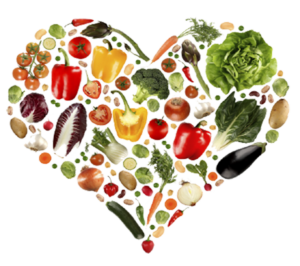February 16, 2018
Eating for a Healthy Heart
When it comes to nutrition and eating for a healthy heart, some simple diet changes can improve your lipid numbers. Lipid labs are the labs your doctor orders to check the levels of cholesterol, LDL (bad) cholesterol, HDL (good) cholesterol, and your triglycerides. It’s important to know your numbers and to understand what those numbers means so that you can be more proactive when it comes to taking care of your heart.
Cholesterol is mostly made in the liver and little comes from our food. It is carried by the LDL particle to each cell of our body and is necessary to make cell walls, hormones, and even bile that break down fat and fiber. When we have too much cholesterol or the LDL particle is small and sticky, it forms plaque on our arteries.
HDL cholesterol hauls the excess cholesterol back to the liver to be recycled and acts like a “garbage collector.” It is good to have LOTS of garbage collectors. Most of our HDL is determined by heredity, but weight loss, exercise, and smoking cessation can raise HDL. Eating a heart healthy diet, finding an exercise regimen that fits your lifestyle, and reducing heart health risks can improve your HDL.
Lastly, triglycerides are made in the liver. Triglycerides should be below 150. High triglycerides are associated with: low HDL, sticky LDL particles, and insulin resistance (the start of diabetes). We really like low triglyceride levels.
To lower cholesterol and LDL:
- Eat foods low in HARD fats. Hard fats tell your liver to over-produce cholesterol. Saturated and trans fats literally are hard at room temperature. Saturated fats are mostly from animals. Trans fats are man-made and not only raise cholesterol and LDL but lower the good HDL. Bottom line, the leaner the meat the better, use low fat dairy products and avoid all trans-fat foods. This information is on all food labels.
- Increase fiber in your diet. Especially oat cereals, fruits, vegetables, and legumes will lower blood cholesterol levels, also lowering LDL.
To lower triglycerides:
- Increase the intake of “good” fats. Even though triglycerides are fat, they are raised with the high intake of refined carbohydrates, high intake of alcohol, or very large meals. They are lowered by adding olive oil, nuts, peanut butter, salmon, and other healthy fats.
To help you know what your lipid numbers mean to your heart health and to find out more dietary ways to change, ask to see a Registered Dietitian for some good advice.

